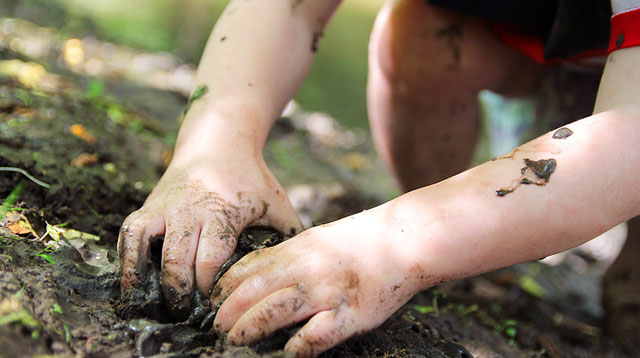Sometimes It’s a Really Good Idea to Let Your Child Play in the Mud or Dirt
Allowing your child to play in “mud” is actually worth the hassle of washing his clothes and needing to clean up afterwards. What other “mud” activities have you tried?
As we write this piece, the temperature outside of Metro Manila is 34°C. The idea of playing outdoors — at least between 11 a.m and 4 p.m. — feels like we’ll end up putting our kids through heat exhaustion. Who can blame kids for preferring to stay indoors? But once they are in the house, it is very easy to play games on their mobile devices for hours on end. We can all agree that’s something we don’t want to happen regularly.
Besides, the benefits of letting your child play outdoors (early in the morning or after 4 p.m.) are numerous when it comes to his development, whether you make him ride his bike around the neighborhood or even dig his hands (and feet) into the dirt. Sure, it’s the perfect opportunity to get exposed to icky bacteria and nasty stains on his clothes. However, experts say that letting your little one get dirty can actually be very helpful for his all-around growth!
Why you should let your child play in the mud
Allowing a child to get dirty and play in the mud, so to speak, is more than just about making him have fun. It naturally develops the eight sensory systems (yes, eight! more about this below), gives way to significant brain development, has a positive impact on his health positively, and caters to kids of all ages and skill sets. Plus, just imagine the potential for beautiful memories you can make with him!
It develops the eight senses
You read that right — aside from the five senses we all learned about in school, three other bodily systems can be improved when a child plays in the mud. These are called the vestibular sense, the proprioceptive sense, and the interoceptive sense.
The vestibular sense is the sensory system that contributes to a human’s ability to maintain balance and body posture. It is also responsible for collecting information that is important in controlling bodily movements and reflexes that move the different parts of the body.
The proprioceptive sense focuses on the awareness of the position of the body, so that a person can know, for instance, where to put their foot when stepping off a curb or how much pressure to use when pressing a button in an elevator.
Lastly, the interoceptive sense refers to the system that allows a person to feel and understand what is going on inside his body by sending messages from the organs to the brain. This sensory system lets a person know when he is full, hungry, hot, cold, thirsty, or when he needs to use the restroom.
It’s vital to develop the eight senses because altogether, they allow children to interpret the world and organize how they respond to the stimuli they encounter. If even one of these systems are not functioning properly, it can become difficult for the child to figure out how to respond to stimuli so he might get overwhelmed.
It fosters the development of their brain
Through activities like movement and physical play, the brain of child forms new connections, and this is followed by the improvement of different abilities such as motor skills, language, problem-solving, learning, creativity, socialization, and personal awareness. Similarly, children who are allowed to play freely can learn about the world they live in.
Original Article from Smart Parenting

